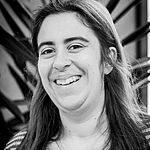Maximal representations are representations of fundamental groups of a surface \(S\) in any Hermitian Lie group \(G\) that attain the maximal value of the bounded Toledo number. They form full connected components of the character variety (with suitable boundary constraints for open surfaces). They have many common features with positive representations or Hitchin representations in split real Lie groups and maintain many of the charaterizing properties of Teichmüller theory, which can be seen as the easiest instance of each of these branches.
Systoles. Locally symmetric spaces associated to maximal or Hitchin representations do not have finite volume, and features of hyperbolic surfaces that are consequences of the finiteness of the area, might not carry through. Zhang's constructions of internal sequences in the Hitchin component shows that no uniform systolic bounds can be achieved overall maximal representations, as opposed to Bers' uniform bound overall the Teichmüller space. This raises the problem to find explicit and general examples of sequences of maximal representations whose systole diverges to infinity and to understand the geometric reason for that. A first step would be to find an intrinsic parametrization of the space of maximal representations enlightening higher rank directions.
Strip deformations. In his attempt to define a spine for Teichmüller space, Thurston introduced strip deformations for open surfaces. The project aims to study the analogue for maximal representations and to generalize the work of Parlier-McShane on the length spectrum in the Teichmüller space to maximal representations.
Orbifolds. It would be interesting to develop a theory of maximal representations for orbifolds.
Framed maximal actions on buildings. Associated to an unbounded sequences of maximal representations is a framed maximal action on an affine building. The case in which elements of zero translational length generate \(\Gamma\) exhibits some similarities with what happens for sequences of representations in the Teichmüller space. The case in which no non-peripheral element in \(\Gamma\) has a fixed point is more intricate. By studying more in detail the properties of a maximal framing, we want to understand if there is a weak notion of convexity well adapted to those representations, and construct, at least in some cases, invariant subsets of the building with good properties. We aim to study the distribution of different dgenerations in various natural boundaries of the space of maximal representations, analyze the action of the mapping class group on the boundary, and give a cohomological characterization of framed maximal representations as for ordinary maximal representations.
Eartquake theorems and cataclysm deformations. A very important source of deformations on the Teichmüller space studied by Thurston are cataclysms. A locally defined generalization of cataclysm deformation for Hitchin representations was constructed by Dreyer. The project aims to generalize cataclysm deformations to maximal representations, and to discuss variation of length functions along cataclysms.
Entropy. The topological entropy of a representation gives an estimate on the growth rate of curves, and plays a crucial role in understanding the asymptotic properties of the representation. The goal is to show that the topological entropy of a maximal representation \(\rho\colon\Gamma\to Sp(2n,{\mathbb R})\) is bounded above by 1 with equality if and only if the Zariski closure of the image is \(SL(2,{\mathbb R})\).
Maximal representations of complex hyperbolic lattices. It would be interesting to generalize the rigidity results about maximal representations of complex hyperbolic lattices to a wider class of representations of those groups, encompassing, for example, the inclusion \(\Gamma\to SU(1,p)\to SO(2,2p)\).
Publications
We introduce coordinates on the space of Lagrangian decorated and framed representations of the fundamental group of a surface with punctures into the symplectic group Sp(2n,R). These coordinates provide a non-commutative generalization of the parametrizations of the spaces of representations into SL(2,R) given by Thurston, Penner, and Fock-Goncharov. With these coordinates, the space of framed symplectic representations provides a geometric realization of the non-commutative cluster algebras introduced by Berenstein-Retakh. The locus of positive coordinates maps to the space of decorated maximal representations. We use this to determine the homotopy type of the space of decorated maximal representations, and its homeomorphism type when n=2
Related project(s):
28Rigidity, deformations and limits of maximal representations
We study the Thurston–Parreau boundary both of the Hitchinand of the maximal character varieties and determine therein an open setof discontinuity for the action of the mapping class group. This result isobtained as consequence of a canonical decomposition of a geodesic cur-rent on a surface of finite type arising from a topological decompositionof the surface along special geodesics. We show that each componenteither is associated to a measured lamination or has positive systole. Fora current with positive systole, we show that the intersection function onthe set of closed curves is bi-Lipschitz equivalent to the length functionwith respect to a hyperbolic metric.
Related project(s):
28Rigidity, deformations and limits of maximal representations
In this paper we investigate the Hausdorff dimension of limitsetsof Anosov representations. In this context we revisit and extend the frameworkof hyperconvex representations and establish a convergence property for them,analogue to a differentiability property. As an applicationof this convergence,we prove that the Hausdorff dimension of the limit set of a hyperconvex rep-resentation is equal to a suitably chosen critical exponent. In the appendix, incollaboration with M. Bridgeman, we extend a classical result on the Hessianof the Hausdorff dimension on purely imaginary directions.
Related project(s):
28Rigidity, deformations and limits of maximal representations
We study Anosov representation for which the image of the bound-ary map is the graph of a Lipschitz function, and show that theorbit growthrate with respect to an explicit linear function, the unstable Jacobian, is inte-gral. Several applications to the orbit growth rate in the symmetric space areprovided.
Related project(s):
28Rigidity, deformations and limits of maximal representations
We define a Toledo number for actions of surface groups and complex hyperbolic lattices on infinite dimensional Hermitian symmetric spaces, which allows us to define maximal representations. When the target is not of tube type we show that there cannot be Zariski-dense maximal representations, and whenever the existence of a boundary map can be guaranteed, the representation preserves a finite dimensional totally geodesic subspace on which the action is maximal. In the opposite direction we construct examples of geometrically dense maximal representation in the infinite dimensional Hermitian symmetric space of tube type and finite rank. Our approach is based on the study of boundary maps, that we are able to construct in low ranks or under some suitable Zariski-density assumption, circumventing the lack of local compactness in the infinite dimensional setting.
Related project(s):
28Rigidity, deformations and limits of maximal representations
Team Members
Dr. Jonas Beyrer
IHES
jbeyrer(at)mathi.uni-heidelberg.de
Mareike Pfeil
Ruprecht-Karls-Universität Heidelberg
mpfeil(at)mathi.uni-heidelberg.de
Prof. Dr. Maria Beatrice Pozzetti
Project leader
Ruprecht-Karls-Universität Heidelberg
pozzetti(at)mathi.uni-heidelberg.de
Dr. Gabriele Viaggi
Ruprecht-Karls-Universität Heidelberg
Prof. Dr. Anna Wienhard
Project leader
Max Planck Institute for Mathematics in the Sciences
Anna.Wienhard(at)mis.mpg.de



